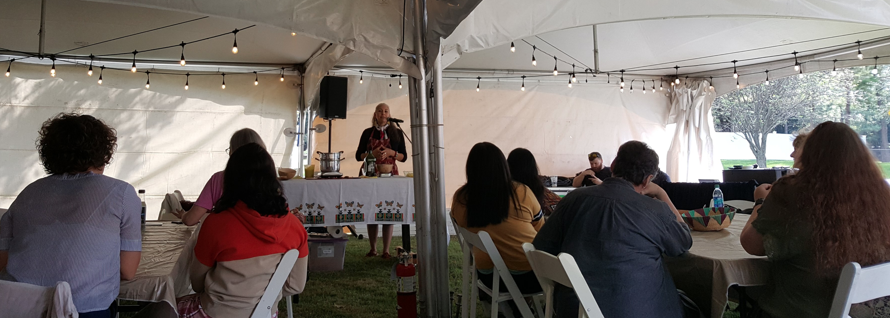by Catherine McCarley
BENTONVILLE, Ark. – On a mild Saturday morning in early October, Felicia Ruiz walks past the Museum of Native American History, heading for a tent on the front lawn. A tall woman wearing a colorful scarf and determined expression, she is a guest of the museum, here to teach the third in a series of workshops about indigenous medicine.
“It’s a personal mission for me to not only share what our medicines are through an indigenous lens, but it’s also necessary for healing on both sides,” Ruiz said.
While Felicia pours beeswax into a double boiler and takes stock of an assortment of essential oils, a mix of people, mostly older, a few young, filter into the tent. Her students sit at two wide, white-topped folding tables.
“If more people come, we will just add more oil to the pot,” Ruiz said, smiling warmly.
Ruiz begins the class with the story of her life. She is a Curandera, a Native American healer, and the granddaughter of a Curandera, “that plant nerd at home,” who became a chef, a restaurant owner, a mother who used homeopathy to soothe her brother’s dying moments and heal her daughter’s severe anxiety.
She designed this class, called “Aromatic Warriors,” to help Native American teens relieve anxiety using indigenous healing techniques, Ruiz said. Teens with native heritage get assaulted by negative stereotypes in a way that can wear them down, Ruiz said.
“You are just a stupid Indian. We have been told these things,” Ruiz said. “That really carries on into their home life, their school life and it does bring on a lot of anxiety. That is why I had made this for them today.”
Ruiz said helping indigenous kids is one of the most inspiring aspects of her practice as a healer.
“What I do when I’m working with youth is really remind them that they have value and they need to give back to their own self for self-love and self-care,” Ruiz said.


